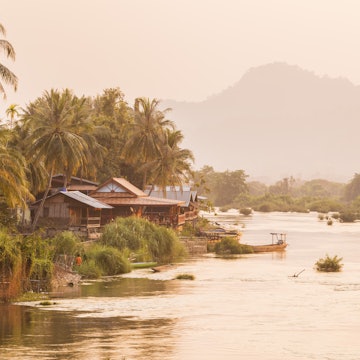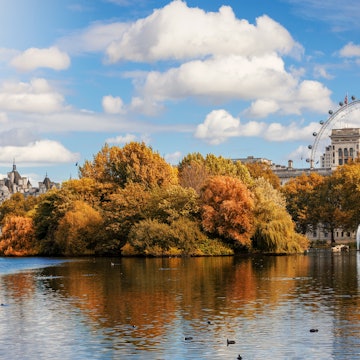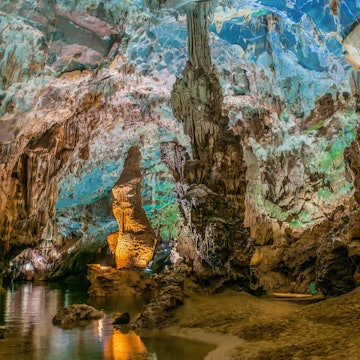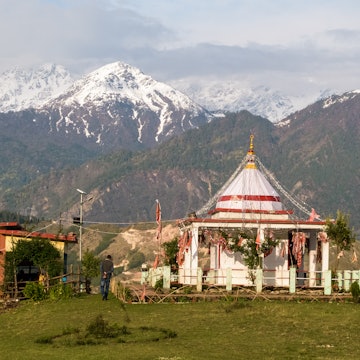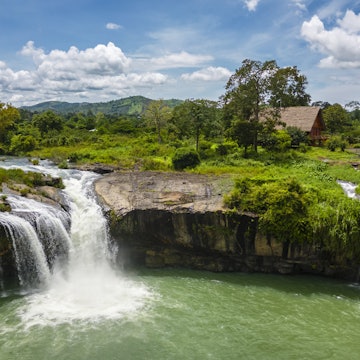
15 best places to go off-grid around the world in 2023

Dec 26, 2022 • 14 min read

Horseback riding through the mountains of Lesotho © Nadine Swart / Getty Images
Peace, quiet and the freshest of air: some of the world’s most remote destinations are sanctuaries of stillness and solitude.
These are the kind of destinations that give you the luxury of disconnecting from the glare of a screen as you reconnect with your natural surroundings – and yourself.
The following destinations are highlights from Lonely Planet’s new title Offbeat, an inspiring book that introduces 100 exciting alternatives to the world’s most over-touristed destinations for your next trip.
The question now is: where do you want to go? Hopefully this guide can provide some new answers.

Lesotho
The tiny mountain kingdom where communities are investing in tourism
Dominated by the Drakensberg and Maluti mountain ranges, tiny Lesotho can claim to be the world’s highest country – even its lowest point, in the so-called Lowlands, stands at around 1400m (4593ft) high. While hiking or trekking on a sturdy Basotho pony through this sparsely populated mountain kingdom, you’re more likely to meet a shepherd clad in a traditional Basotho blanket than the tourist crowds of South Africa, which fully encircles Lesotho. In 2019, just 800,000 international tourists explored its exhilarating 3000m(9840ft)-plus passes, compared with the 15.8 million who visited South African highlights such as Table Mountain and the Blyde River Canyon.
The former British protectorate’s community-run backpacker lodges, often occupying the mountaintop trading posts that once served the remote villages of thatched rondavel (roundhouse) huts, remain a travel secret. Even Prince Harry’s connection to the country – he worked with AIDS orphans on his gap year and co-founded the charity Sentebale – has yet to put this rugged country on typical sub-Saharan travel itineraries.
9 of the most remote glamping spots in the world

Tetouan, Africa
Morocco’s overlooked white city is an artistic haven steeped in history
There’s something immensely appealing about the small city of Tetouan, where white buildings cling to the Rif mountainsides. While so many head for the blue-washed streets of nearby Chefchaouen, those in the know travel slightly further north to Tetouan to avoid the crowds. Phoenicians established a port here, while third-century Roman remains dot the hillsides. The city has a cosmopolitan air thanks to centuries of immigrants. Jews and Moors escaping 15th-century Spain settled here, as did later Ottoman-era Algerians fleeing the French. Between 1912 and 1956, Tetouan was the capital of northern Morocco’s Spanish Protectorate.
The best time to go to Morocco

Con Son
New trails and marine conservation put this tropical dot on the map
The mountains crash into the sea in Con Son, a coral-fringed island off the coast of southern Vietnam. One of 16 volcanic islands and islets of the Con Dao archipelago, Con Son feels like a world removed from the bustling market towns of the Mekong Delta across the water. The 52-sq-km (20-sq-mile) island has a population of around 7000 inhabitants and contains large swaths of untouched forests, lotus-flower-covered lakes and deserted beaches fringed by casuarina trees.
Wildlife emphasizes nature’s starring role here. Endangered sea turtles nest on the sands, while abundant marine life (and several wrecks) lie just offshore. The island is also home to more than 80 bird species, as well as the endemic long-tailed macaque, which can be spotted on island treks. Yet the air of tropical paradise belies a dark past. Con Son was once hell on earth for the thousands of prisoners who languished in island jails during French rule and the American-backed regime. Former prisons and cemeteries serve as powerful memorials to those who suffered and perished here.
What to eat and drink in Vietnam

Nagaland
An immersive tribal adventure in India’s last frontier
For decades, Nagaland was the edge of the known world in India – a mesmerizing last frontier, bounded by misty mountains, studded with tribal villages and tantalizingly off-limits to travelers thanks to lingering red tape dating to colonial times. The last decade has seen the obstacles to travel slowly whittled away, but the message has been slow getting out: fewer than 6000 foreign visitors made it to Nagaland in 2019, compared with a staggering 1.6 million to Rajasthan. If you want to experience India as it was before mass tourism, look no further.
Once (though thankfully no longer) known as headhunters, the assorted tribal cultures of Nagaland hold onto many of their fascinating pre-colonial traditions. Most groups have nominally converted to Christianity, yet animist traditions such as decorating homes with buffalo skulls still endure. It’s possible to spend weeks in Nagaland without seeing a single fellow traveler. Travel is slow and discomfort levels can be high, but staying in village homestays will immerse you deeply in the life of this fascinating Indian state.
The 8 best national parks in India
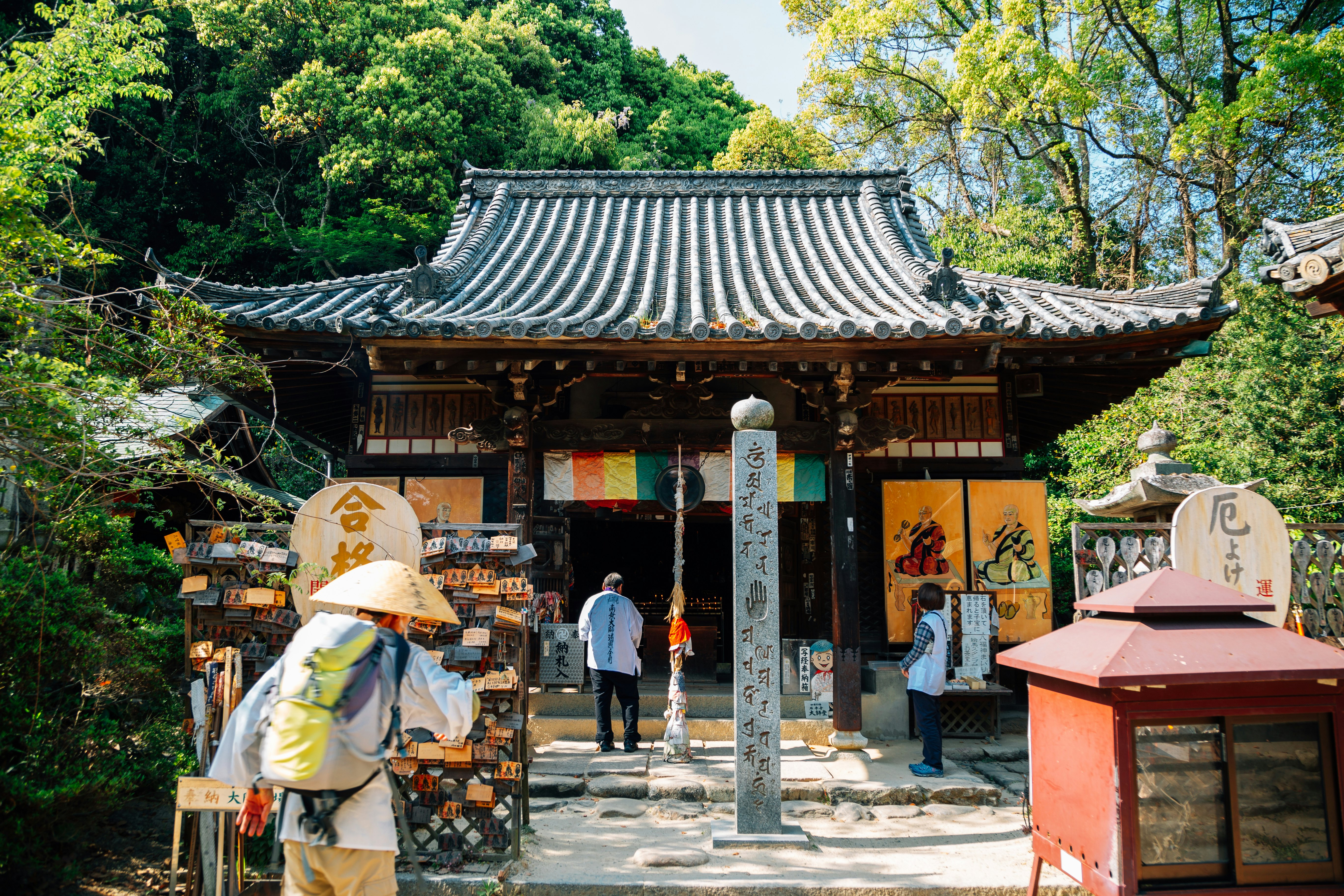
Shikoku, Japan
Japan’s outdoorsy pilgrimage island that champions zero-waste living
Shikoku seldom makes it onto most international visitors’ travel itineraries of Japan, even though the island has much to offer. Major events such as Tokushima city’s annual Awa Odori Matsuri, Japan’s equivalent of the Rio Carnival, bring in local crowds in August. Matsuyama’s venerable Dōgo Onsen is a magnet for hot-spring fans. And every three years Shikoku’s Kagawa Prefecture co-hosts the Setouchi Triennale, a superb contemporary-arts festival covering nearby islands such as Naoshima and Shōdo-shima.
But beyond the headline attractions, there are also many under-the-radar experiences and destinations. Search out the sustainability projects in the zero-waste village of Kamikatsu. Head to the remote Iya Valley to stay in an 18th-century thatched farmhouse and to raft the upper reaches of the Yoshino River. Hike part, or all, of the island’s 88-temple pilgrimage route. Or join surfers along the rugged southern Pacific coast, between the two spectacular capes of Muroto-misaki and Ashizuri-misaki. This is Japan far from the madding crowds.
Following the Udon Trail on the Japanese island of Shikoku

Kanchenjunga Region, Nepal
Welcome to the unspoiled Himalaya in Nepal’s silent corner
The trek to Everest Base Camp may transport hikers two-thirds of the way up the world’s highest mountain, but the trails can often feel mobbed. Walkers who crave equally spectacular vistas with bonus silence trade the crowded paths of the Everest region for the empty wilds of far eastern Nepal, where Kanchenjunga – the third-highest mountain on Earth at 8586m (28,169ft) tall – rises amid a glacial garden of snow peaks.
While more than 57,000 trekkers and mountaineers make it to Everest Base Camp every year, the Kanchenjunga Conservation Area sees just 900 visitors annually. Don’t expect apple pie (Everest’s traveler comfort food) at every stop – you’ll need backing from a trekking agency to follow the rough trails that climb to the base camps above Pang Pema and Ramche. To soften the blow, remote farming villages provide welcome hot meals for the adventurous who make it out to this remote corner. And in exchange for the effort and expense, you’ll get a truly unspoiled vision of the Himalaya, as you pass through some of the most dramatic terrain on the planet.
7 expert tips to sustainably trek to Everest Base Camp
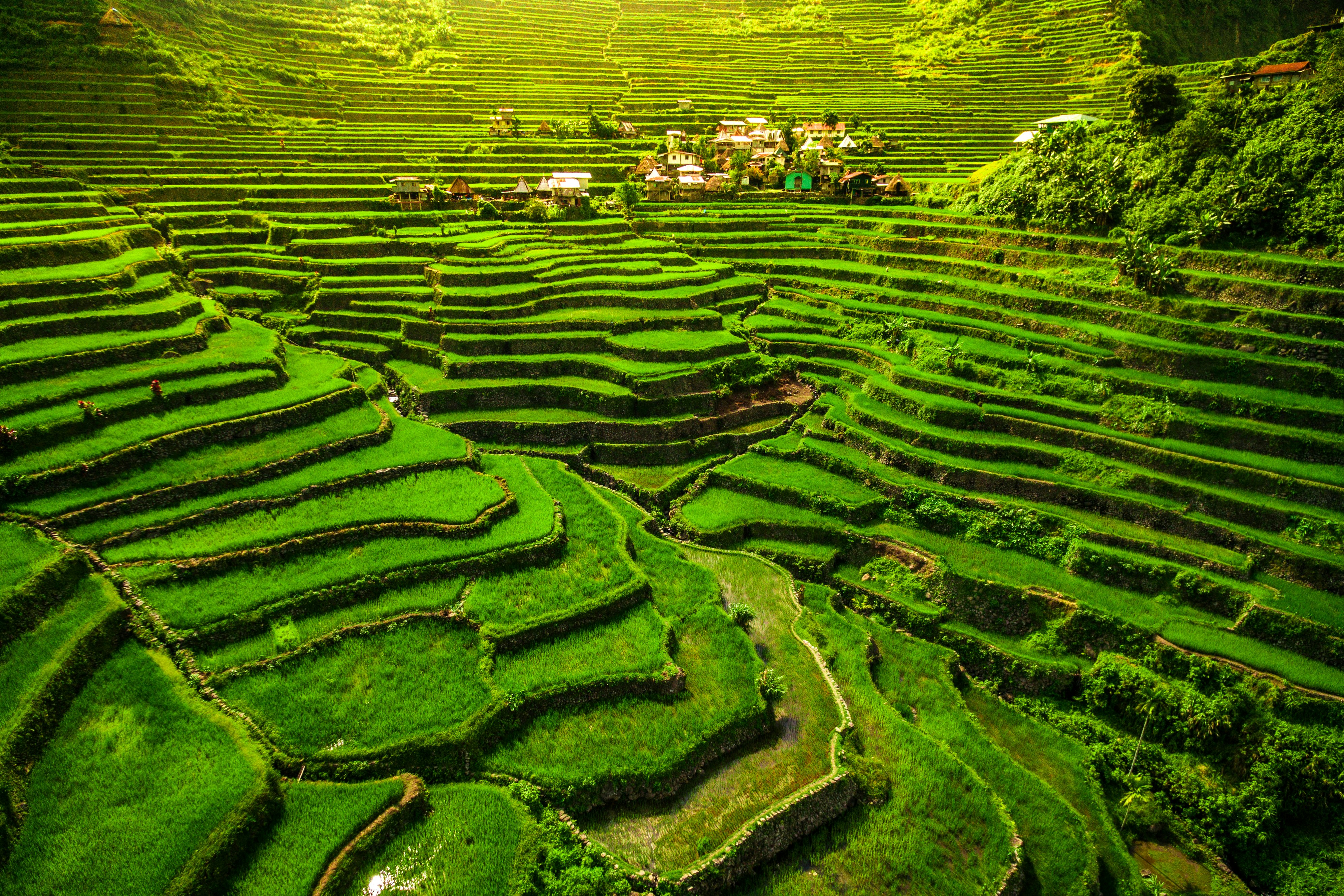
North Luzon, Philippines
Headhunters and Spanish history in the jungle highlands above Manila
While the sugar-white beaches and world-class dive sites around Boracay, Cebu and El Nido are renowned worldwide, North Luzon – the “head” of the ”old lady” that is the Philippines archipelago – is often overlooked. Yet it encapsulates the essence of the country better than any other island. Along the sea-hugging highway, surfers hit the waves at San Juan (La Union), Pagudpud and Baler. The 16th-century west coast city of Vigan has the finest Spanish colonial architecture in Asia, while the impenetrable east coast jungle shelters many of the country’s endemic species.
Inland, the forest-clad Cordillera mountain range beckons with its Unesco-acclaimed tiered rice terraces, white-water rivers, hanging coffins and skull-filled caves. The highland villages of the country’s richest cultural enclave, the Kalinga province – where headhunting has taken place within living memory – ring with myriad different languages and dialects. Further out to sea, the soporific, traditional life on the Batanes islands feels a world away from Manila’s nightclubs.
These eco-adventures are the best way to experience the Philippines

Tubagua, Dominican Republic
Thatched jungle cabins and community tourism beyond the beaches
In a country where few tourists make it beyond the swim-up bar of their all-inclusive resort, Tubagua offers a refreshing alternative. Perched on the cusp of the Cordillera Septentrional and bisected by the Ruta Panorámica, a serpentine road linking the Dominican cities of Puerto Plata and Santiago de los Caballeros, it’s home to one of the Caribbean’s best eco-lodges. Within the small strung-out village of Tubagua, where simple one-story houses are interspersed with grassy cow pastures, the lodge sits in a spectacular lofty position, built in the style of a traditional Indigenous village. Here, amid lush foliage and rolling hills, pop-up roadside stalls ply an A to Z of tropical fruit, and villagers on motor scooters fill up on gas sold in recycled rum bottles.
Radically different from the coast in tempo and culture, Tubagua is a perfect place to absorb the nuances of authentic Dominican life through community-tourism projects. If you’re willing to forsake air-con for gentle mountain breezes and poolside merengue for a shrill chorus of cicadas, this could be your nirvana.
5 can’t-miss Dominican Republic road trips

Suriname
Maroons and Amerindians rule this wild pocket of South America
Suriname isn’t just South America’s smallest country, it’s also its least visited. Which means this little-known corner of the continent, well off the Gringo Trail, offers a refreshingly different South American experience. Following coups and a civil war in the 1980s, today’s Suriname is also statistically one of South America’s safer countries to visit. Tucked inside the mouth of the Suriname River, the sultry Dutch-colonial capital Paramaribo is packed with Unesco-listed architecture, buzzy nightspots and some excellent restaurants featuring the spicy fusion cuisine of its ethnically diverse population, largely descended from escaped enslaved Africans (known as Maroons), Indian, Indonesian and Chinese indentured laborers, English and Dutch colonists and indigenous Amerindians.
Old plantation houses symbolize a dark chapter of Suriname’s history, when it was one of the world’s most brutal slave colonies. Just a few hours away by road or boat, the nation’s untamed jungles cover more than 90% of its territory, with wildlife-spotting opportunities and a window into Maroon culture.
Lonely Planet’s seasoned hikers pick their top hikes in the Americas
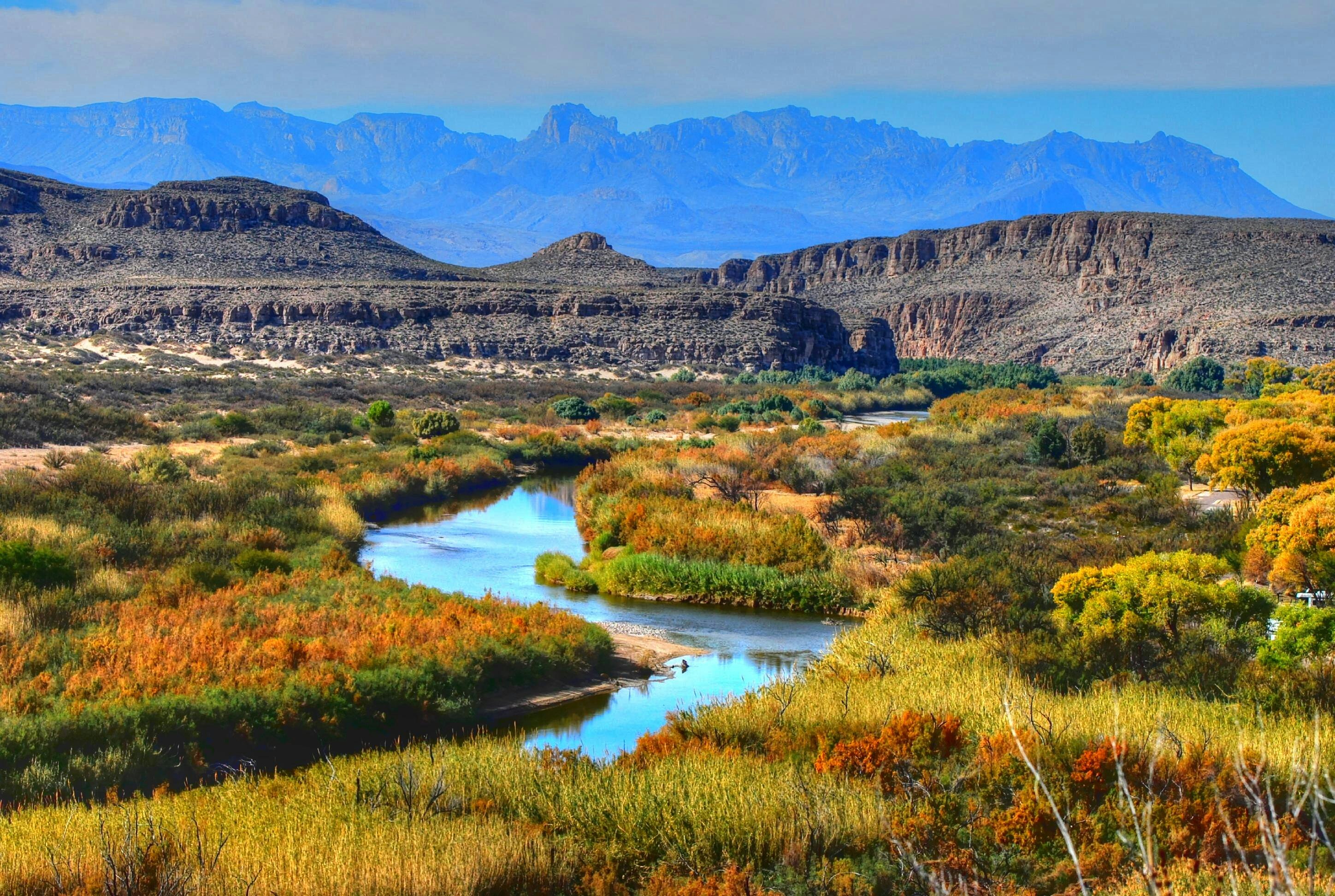
Big Bend National Park, Texas, USA
Blissful isolation keeps this Texan park from getting overrun
The mountains meet the desert in Big Bend, a vast national park tucked into a remote corner of west Texas. Set with steep-walled canyons, craggy peaks and a verdant river corridor carving through the scrubland, this expansive wilderness offers a wide range of adventures. You can spend your days hiking rugged trails, paddling along smooth rivers and soaking in natural hot springs, followed by an evening of stargazing in one of the world’s largest Dark Sky Parks. Big Bend is also an avian paradise, with over 450 bird species – the most of any national park in the US.
Make no mistake: Big Bend is remote. It’s more than three hours from the nearest airport, and by road it’s a long way from anywhere (it's at least an eight-hour drive from Dallas and Houston). Yet it is this very isolation that has saved it from overdevelopment. The national park receives fewer than 10% of the visitors the Grand Canyon receives, and multi-day excursions – like rafting on the Rio Grande – don’t require booking many months in advance.
The 6 most unmissable road trips in Texas

Kufstein, Austria
Forget Salzburg: this Tyrol beauty is the real alpine fairytale
So you like the idea of Salzburg – but not its crowds. Cue Kufstein in Tyrol, snuggling up to the Bavarian Alps just an hour’s train ride west of Salzburg. This town is something a child who had been binge-reading too much Brothers Grimm might draw: pastel-painted, gabled houses strung along cobbled lanes; lantern-lit taverns; a cake-topper of a medieval fortress lifting the gaze above the Inn River to fir forests; cow-grazed meadows under jagged, snow-frosted mountains. Resembling a romantic stage set, this town is the Austria of Alpine fantasies.
Kufstein shot momentarily to national glory in the jaunty 1970s folk song “Die Perle Tirols” (“The Pearl of Tyrol”). And, indeed, it has views to make you want to yodel at full volume, whether you’re hiking ever higher into the limestone spires and turrets of the Kaisergebirge, cross-country skiing in quiet exhilaration through the snowy wilds, or lazing on the shores of a jewel-colored lake. Kufstein delivers an amuse-bouche of culture and a hefty dollop of outdoor adventure.
These hikes in Austria offer a taste of the high life

Hyères, France
Beyond Provence’s honeypots lies this medieval town and Mediterranean islands
Visitors to the Provençal coast inevitably make a beeline for glamorous spots such as Cannes, Cap d’Antibes or St Tropez; rarely does Hyères get a look-in. Yet, packed with historic interest and adjacent to some of the loveliest islands in the south of France, a trip to Hyères really pays out. Settlement here dates back to the 4th-century-BCE Phoenicians, who were displaced by the Hellenistic Greeks, then the Romans.
Later it became the property of the Viscount of Marseilles, before the incorporation of Provence into modern France. Between the medieval centre of Hyères and the sea lie the busy D98 and a modern town dominated by international hotels and casinos. Passers-through run the risk of missing the partially walled Vielle Ville (old town) entirely. The best of Hyères is concentrated in this historic nucleus and the gardens that sprawl above it. But most alluring of all are the Îles d’Hyères, three offshore sirens also known as the Îles d’Or (Islands of Gold).
Driving in the footsteps of Napoleon in the south of France
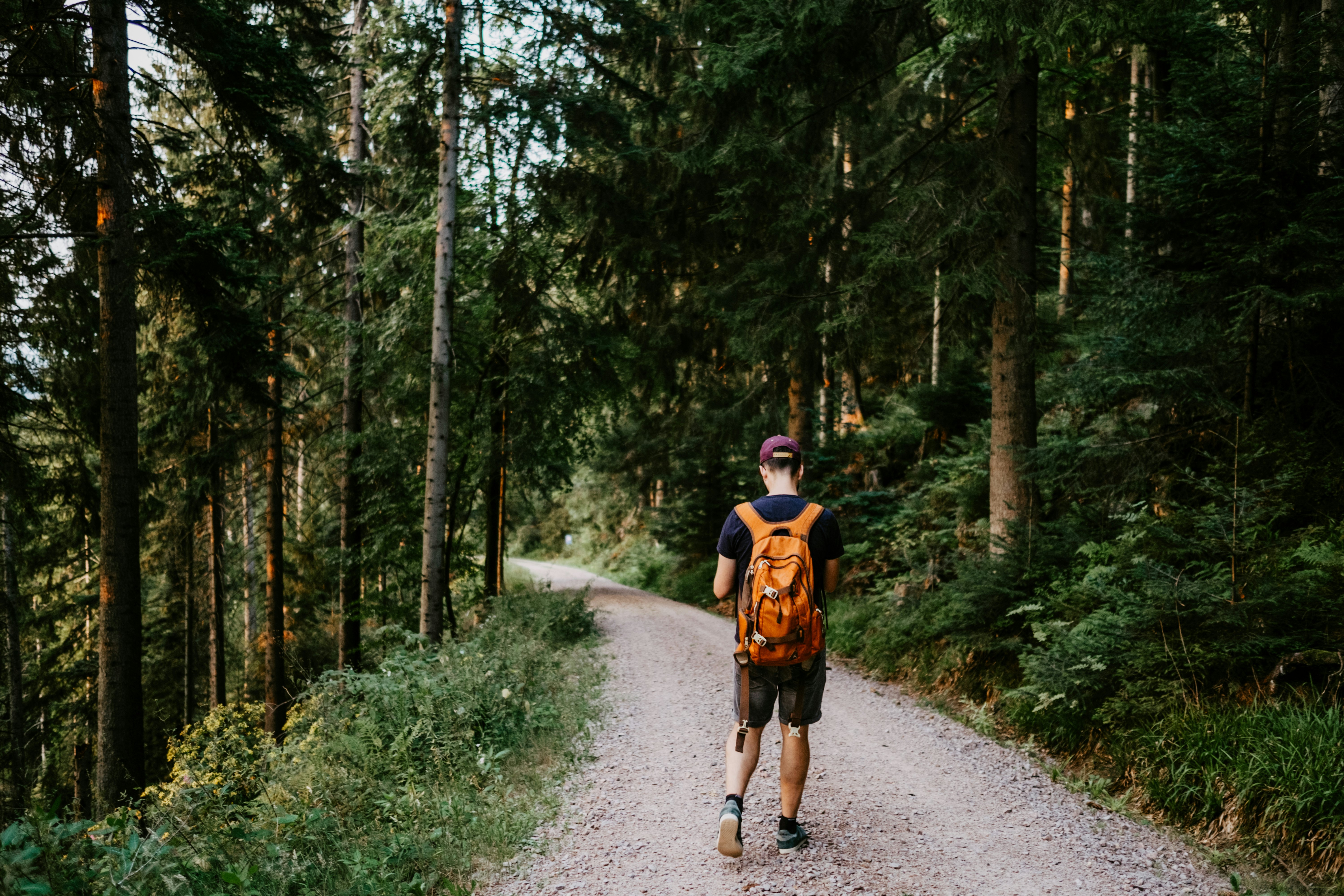
Freiburg & the Black Forest, Germany
An eco trailblazing city swaddled in silent alpine forest fantasies
The Black Forest – isn’t that Bavaria? Nope, though it’s right next door. Yet there are wooded hills and half-timbered towns here that hit the same fairytale sweet spot – albeit with a fraction of the crowds. Cuckoo clock and gateau clichés aside, a vast swath of this valley-pleated, fir-cloaked region falls spectacularly under the tourist radar. Feel the magic by diving into its remotest reaches on foot, by bike or road. In the Black Forest National Park, spruce forests bristle above dark-wood-shingle farms and glacial lakes spread out like deep-blue silk sheets. Treading softly through the forest at first light, you’ll find the kind of peace that’s increasingly rare. Slip on snowshoes or cross-country skis when winter snows fall and the fantasy is complete.
Sustainable? Natürlich. The tree-hugging, nature-loving Schwarzwald is Germany’s original green destination and its eco star just keeps rising, with a new Unesco Biosphere Reserve, ultra-green towns like Freiburg shining brightly with solar power, and miles of diligently marked hiking, cycling and e-biking trails.
Going green in Germany’s Black Forest

Northern Iceland
Follow the arctic coast way along Iceland’s empty Atlantic Crown
Spectacular as it most certainly is, this Atlantic island has suffered from a serious dose of overexposure (around two million visitors a year pre-pandemic, or more than five times Iceland’s population). Though that hardly sounds like the definition of offbeat, the fact is that most of Iceland’s visitors only explore a small corner of the island. From the capital of Reykjavík, tourists are drawn to big sights like Gullfoss, Geysir and the Blue Lagoon – and perhaps Skaftafell’s glaciers or Jökulsárlón’s icebergs for those with time to travel further along the southern Ring Road.
Far fewer venture north – and those that do experience a side of Iceland most visitors never see. Coast roads corkscrewing past deserted headlands. End-of-the-world beaches straight out of a Bergman movie. Geothermal hotpots in the middle of nowhere. Peculiar towns, oddball museums and weird lava caves. Spooky islands where birds outnumber people by 10,000 to one. Sure, it takes a little effort and adventure to escape the crowds – but once you do, you’ll experience Iceland at its rawest and emptiest.

North Macedonia
Europe’s last frontier is this ancient beauty in the Balkans
Against Croatia’s 60 million annual visitors and even Albania’s six million, North Macedonia looks like a Balkan no-man’s land: fewer than 800,000 international tourists made it here in 2019. Undoubtedly, its landlocked status lessens the mass-market appeal, though visitors will certainly feel like they’re gazing out to sea from medieval Ohrid’s lovely lakeside shingle beach. Between huge Lake Ohrid and Lake Prespa, North Macedonia has more waterside tourism than you might think. Yet there’s so much more to this friendly country.
Great swaths of it are dramatically defined by canyons and mountains, including a string of little-developed national parks where quiet hiking trails spin a web between Ottoman-era villages with pencil-thin minarets, slow food producers and community tourism initiatives. And North Macedonia’s complex past, mixing Greek, Roman, Ottoman and Yugoslav heritage, creates a rich historical backdrop. These deep roots can be explored in the museums of Skopje, one of Europe’s most bonkers and irresistible capital cities.








